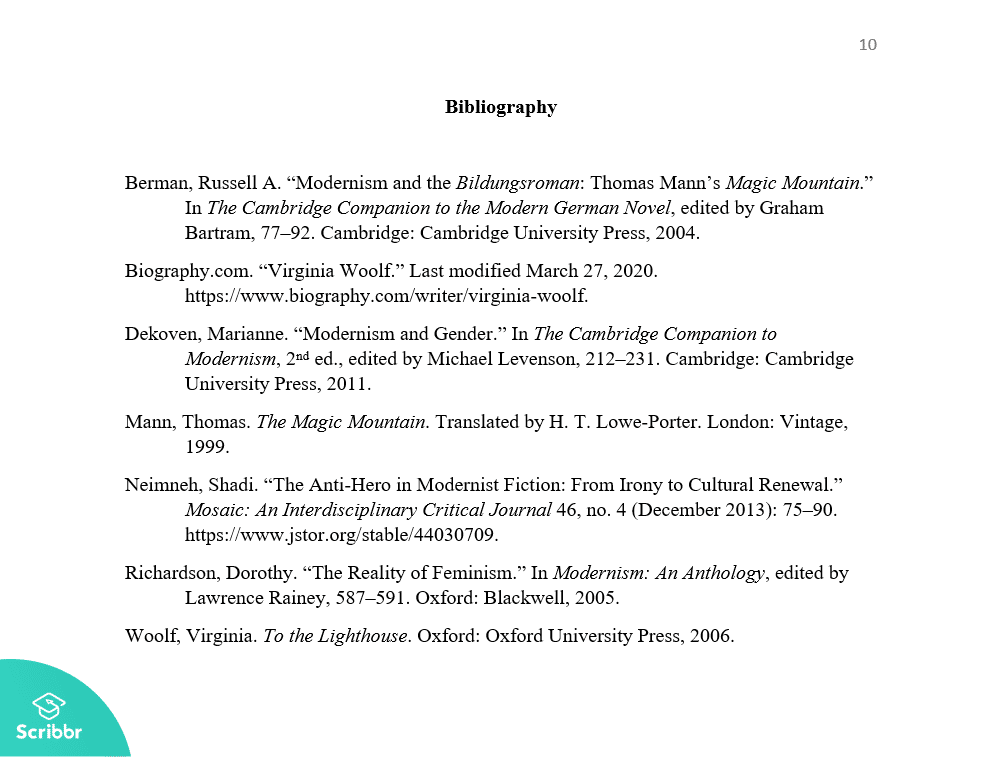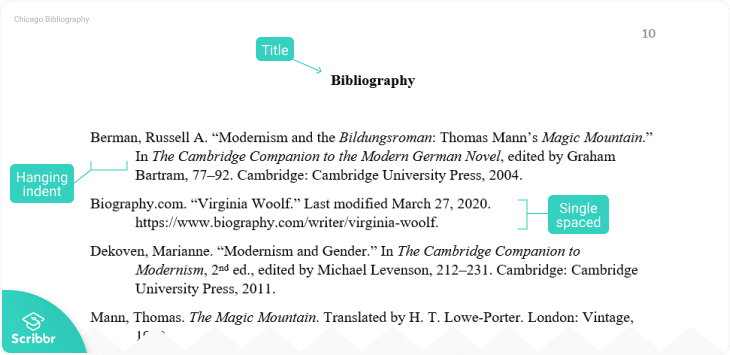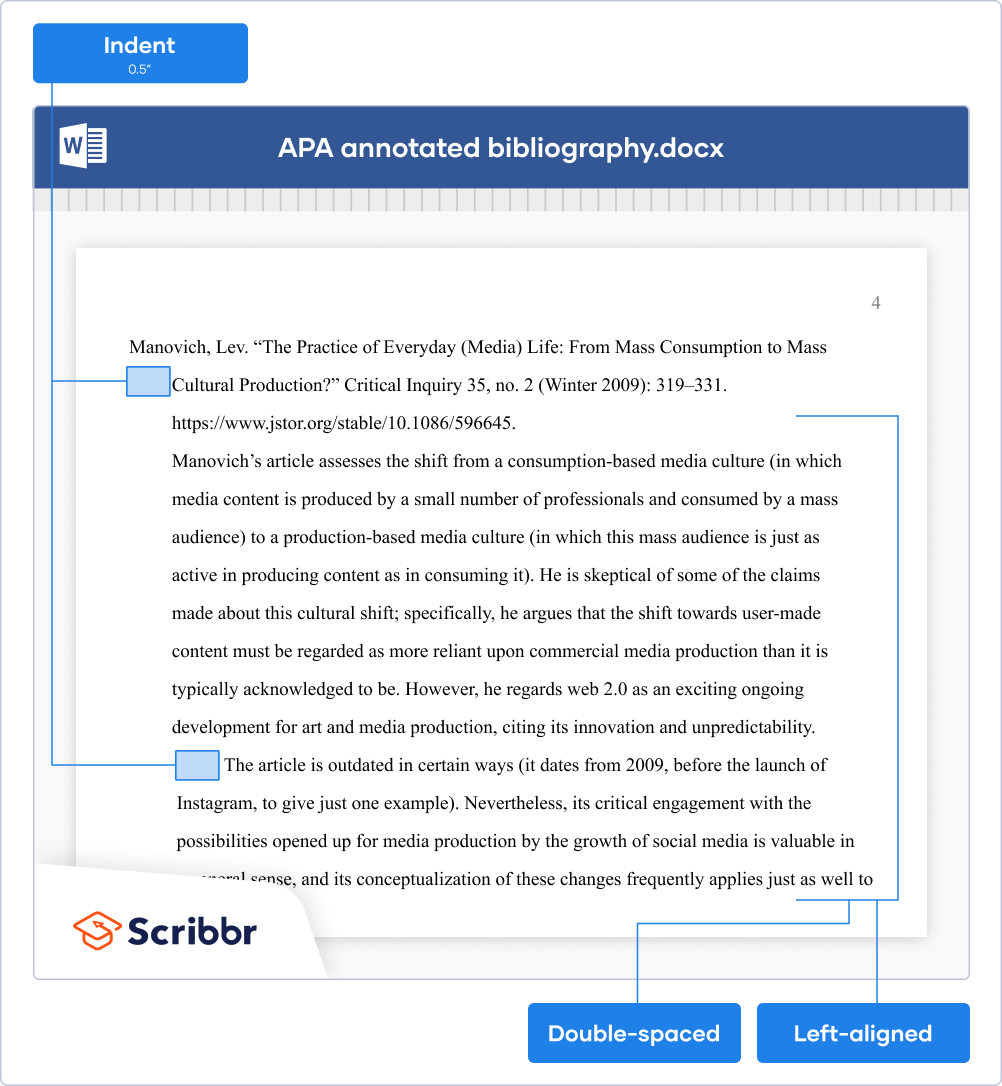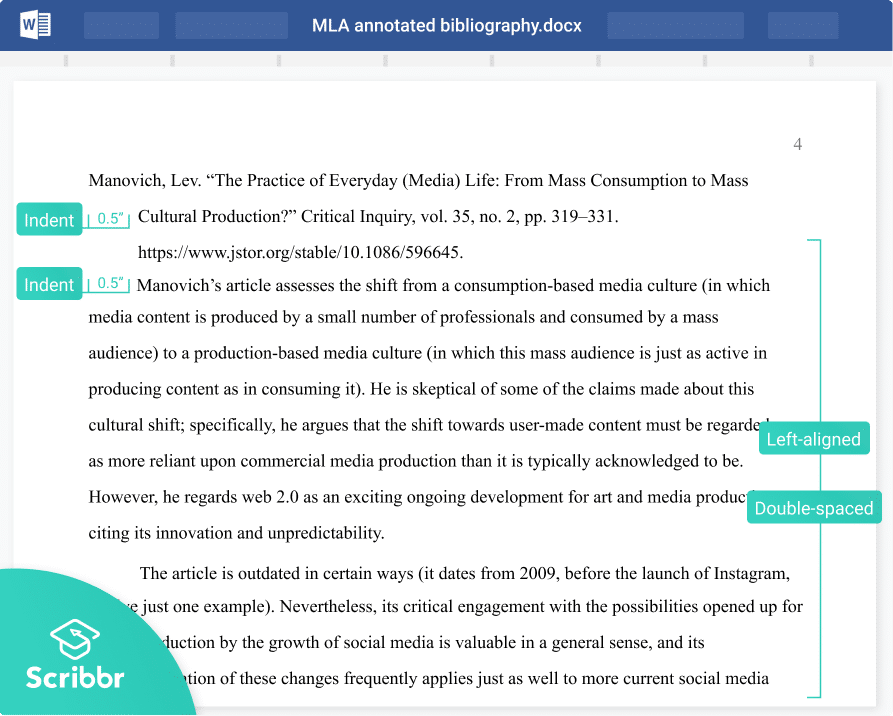:max_bytes(150000):strip_icc()/final-exam-time-465416097-5a048e4789eacc003712490f.jpg)
Not only is this step helpful in determining which sources to ultimately use in your paper, but also your instructor may require it as part of the assignment so they can assess your thought process and understanding of your topic.
One of the biggest reasons to create an APA format bibliography is simply to make the research and writing process easier. If you do not have a comprehensive list of all your references, you might find yourself scrambling to figure out where you found certain bits of information that you included in your paper.
A bibliography is similar in many ways to a reference section, but there are some important differences. While a reference section includes every source that was actually used in your paper, a bibliography may include sources that you considered using but may have dismissed because they were irrelevant or outdated.
Normally a bibliography contains only references' information, but in some cases you might decide to create an annotated bibliography. An annotation is a summary or evaluation of the source.
Create an Annotation for Each Source
An APA format bibliography is an alphabetical listing of all sources that might be used to write an academic paper, essay, article, or research paper. In some cases, your instructor may require you to hand in a bibliography with your final paper.
Your references should be listed alphabetically by the author’s last name and should be double-spaced. The first line of each reference should be flush left, while each additional line of the reference should be a few spaces to the right of the left margin, which is known as a hanging indent.
Even if it is not a required part of your assignment, writing a bibliography can help you keep track of your sources and make it much easier to create your final reference page in proper APA format.
If you are taking a psychology class, you may be asked at some point to create a bibliography as part of the research paper writing process. Even if your instructor does not expressly require a bibliography, creating one can be a useful way to help structure your research and make the writing process easier.

For texts with up to 10 authors, all the authors’ names should be listed in the order they appear in the source, separated by commas.
Bibliography entries vary in format depending on the type of source. Templates and examples for the most common source types are shown below.
Unlike the rest of a Chicago format paper, the bibliography is not double-spaced. However, add a single line space between entries.
- Academic style
- Vague sentences
- Grammar
- Style consistency
Receive feedback on language, structure and layout

- In a reference list entry, the publication year appears directly after the author’s name.
- In a bibliography entry, the year appears near the end of the entry (the exact placement depends on the source type).
In a Chicago footnote citation, when the author of a source is unknown (as is often the case with websites), start the citation with the title in a full note. In short notes and bibliography entries, list the organization that published it as the author.
In Chicago author-date style, your text must include a reference list. It appears at the end of your paper and gives full details of every source you cited.

Kenny, A. (2010). A new history of Western philosophy: In four parts. Oxford University Press.
In this way, it resembles an abstract, but it differs in that you’re describing the source’s approach explicitly rather than just summarizing the ideas it expresses. You should never just replicate text from a source’s abstract, even though you’ll naturally cover similar ground.
An annotated bibliography is an assignment where you collect sources on a specific topic and write an annotation for each source. An annotation is a short text that describes and sometimes evaluates the source.
The Works Cited entry has a hanging indent. The first line of the annotation and those of any subsequent paragraphs are indented.
Table of contents

Manovich’s article assesses the shift from a consumption-based media culture (in which media content is produced by a small number of professionals and consumed by a mass audience) to a production-based media culture (in which this mass audience is just as active in producing content as in consuming it). He is skeptical of some of the claims made about this cultural shift
Manovich, Lev. (2009). The practice of everyday (media) life: From mass consumption to mass cultural production? Critical Inquiry, 35(2), 319–331. https://www.jstor.org/stable/10.1086/596645
The first line of any additional paragraphs should be indented an additional time.

Click the Style drop-down and select the one you want from the list. You’ll see the most common citation styles like APA, MLA, Chicago, and several others.
- The bibliography will not contain a header automatically.
- The bibliography will stop updating your Current List in the Source Manager.
- You can make manual changes to the bibliography if you want to deviate from Word’s built-in styling.
All Bibliography Fields: Although you’ll be presented with the fields you need for the style you select you can also view All Bibliography Fields by marking that checkbox. Then, you’ll see red asterisks next to the recommended fields.
When you finish working with the Source Manager, click Close.
Select Your Style

On the top left of the bibliography heading is an arrow you can click to collapse and expand it. Above the heading, you’ll see a toolbar that lets you do the following.
When the tool displays, you’ll see the Master List on the left and your Current List on the right. Here’s how to work with the Source Manager.
For this task, you’ll be working with the References tab in Word which is the same area you’d use to create a table of contents. And there is a nice section in the ribbon on this tab called, you guessed it, Citations & Bibliography.

But what if I only want to use part of a quotation?
See the next page for examples of how to footnote the most common types of sources that you will use in your NHD paper. NoodleTools will provide you with a full and shortened footnote for each source.
________________________________
If you use this source again later in your paper, it is much easier. Assume that later in my paper I write the sentence:
Tip: Allow your word processor to insert the footnote for you. It will do it automatically, and if you insert one into the middle of the paper, it will automatically renumber it for you. You can find the “insert footnote” button in the reference section of the menu. If you need step-by-step directions, just go to the help menu and type in “insert footnotes.”
Should I list each photograph or document individually?
This biography of Theodore Roosevelt helped me understand the way in which Philippe Bunau Varilla was able to get President Roosevelt to recognize the revolutionary government of Panama. It also gave me details regarding the specific treaties signed between the two nations that gave the U.S. control of the canal zone.
When you are creating a performance or a documentary, you do not need to actively credit sources during your presentation, because it would disrupt the flow of your performance.
That happens. When it does, use [sic]. This is a Latin phrase which means “thus it was written.” Basically, you’re acknowledging that there is a mistake in spelling or grammar, but that is the way the original source was written.
Let’s use the Lusitania article as an example. It is perfectly appropriate to write in your paper that:
The Lusitania was hit by a German submarine at 2:33 pm, and the news of the sinking was published around the world. A fishing fleet was called to help rescue as many passengers as possible in the North Atlantic.[3]
